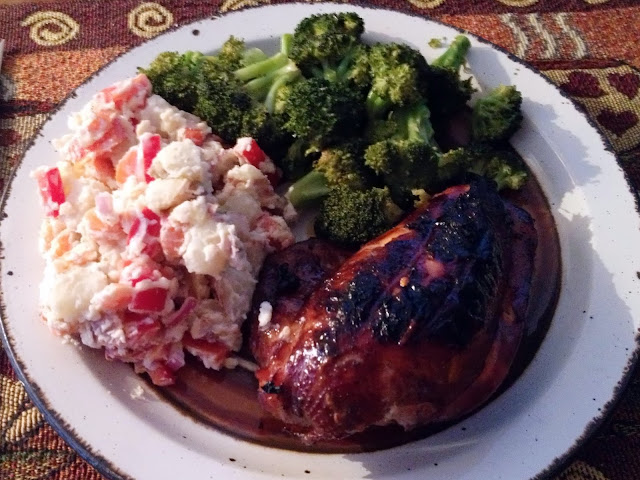 |
| Yup, that's mah fridge. |
Butter
I always use salted butter. Always. I do this for two reasons. One, I like salt. Two, salted butter keeps better. I like to leave some butter out at room temperature for spreadability reasons, and salted butter will last longer than unsalted. Now, if you have health issues that require you to restrict your sodium intake, use unsalted butter! Also, don't use margarine. Just don't. EAT THE BUTTER.
UPDATE: I just did a bunch of research on salted vs. unsalted for baking and I think I'm going to try unsalted European-style butter in my next recipe and see what happens.
UPDATE #2: I'm using Kerry Gold Irish unsalted grass-fed butter for everything now. I get a 3-pack at Costco for a very reasonable price and wow it's delicious (I read that unsalted butter is fresher and I really think that's true). I put one in the fridge and keep the other two in the freezer until I'm ready for them. I am an unsalted butter convert.
Shallots
Shallots have a lovely, delicate onion flavor. I use them almost exclusively in place of onions because I have issues with strong onion flavor (I love it, but it can trigger a migraine... lovely, right?). I use onions for times when I need a larger piece of stuff, like for fajitas, but then I cook them very well. Also, caramelized onions. Anyway, if you've never tried cooking with shallots, I highly recommend it. They are often used in restaurant cooking. If you've ever tried to duplicate a restaurant dish and couldn't figure out why it's just not quite right, try adding shallot (or like twice the amount of butter you might usually use).
Carrots/potatoes/stuff with peels
I never peel these. The other day, I went to my friend's house at snacktime and she was peeling carrots. I was like, "WTF are you doing?!" The skins of root vegetables in particular contain tons of nutrients. That's because the skins are in the dirt and the dirt has all the nutrients! Even on above-ground produce like squash and apples, the skins are both tasty and full of nutrients. You should only peel things if the skin is toxic (like mango) or tough (like avocado), or if you're making a fancy delicate recipe (like whipped potatoes). Now, if you're using non-organic produce (especially those from the bad list below), then by all means, peel it (the skin contains the highest concentration of pesticide residue). All that said, I don't particularly like sweet potato skins, so I peel those! No matter what, it all comes down to your taste. You won't get any nutrients from a thing you don't eat.
Organic foods
Use this list to figure out which foods are best purchased organic and which are safe to eat conventional. While the list specifies spinach and collard greens, I just buy all organic greens. I find it incredibly odd that conventional potatoes are unsafe, yet conventional sweet potatoes are fine.
Refined grains
Some of you who look at my blog might wonder why I use refined grains, rather than whole ones. Well, without getting too gross, I have Irritable Bowel Syndrome, so I need a lot of soluble fiber and very little insoluble fiber in my diet (which is reserved for the peels discussed above). When I first started on this weight-loss journey, I was eating a ton of whole grains and ended up having... problems (I had forgotten about my IBS for a long time since I was eating mostly refined grains while I was gaining all this weight). Anyway, in a lot of my recipes you can substitute whole grains for the refined ones, except in the Chao Ga; that requires starchy white rice.
Animal products
I do what I can, within my limited budget, to purchase ethical animal products. They are better for everyone involved. I spend more money on food than most Americans because I feel that what I put into my body is important and it should be good (in every sense of the word). But I'm not going to go broke buying a chicken that was raised in a spa, either. Grass-fed beef is healthier for you and the cow, organic free-range chickens just plain taste better, and pigs that ate whatever they wanted and rolled around in the mud all day become the most delicious bacon. Sometimes, the cost is prohibitive, so I try and find the next best thing and then look for a deal next time.



